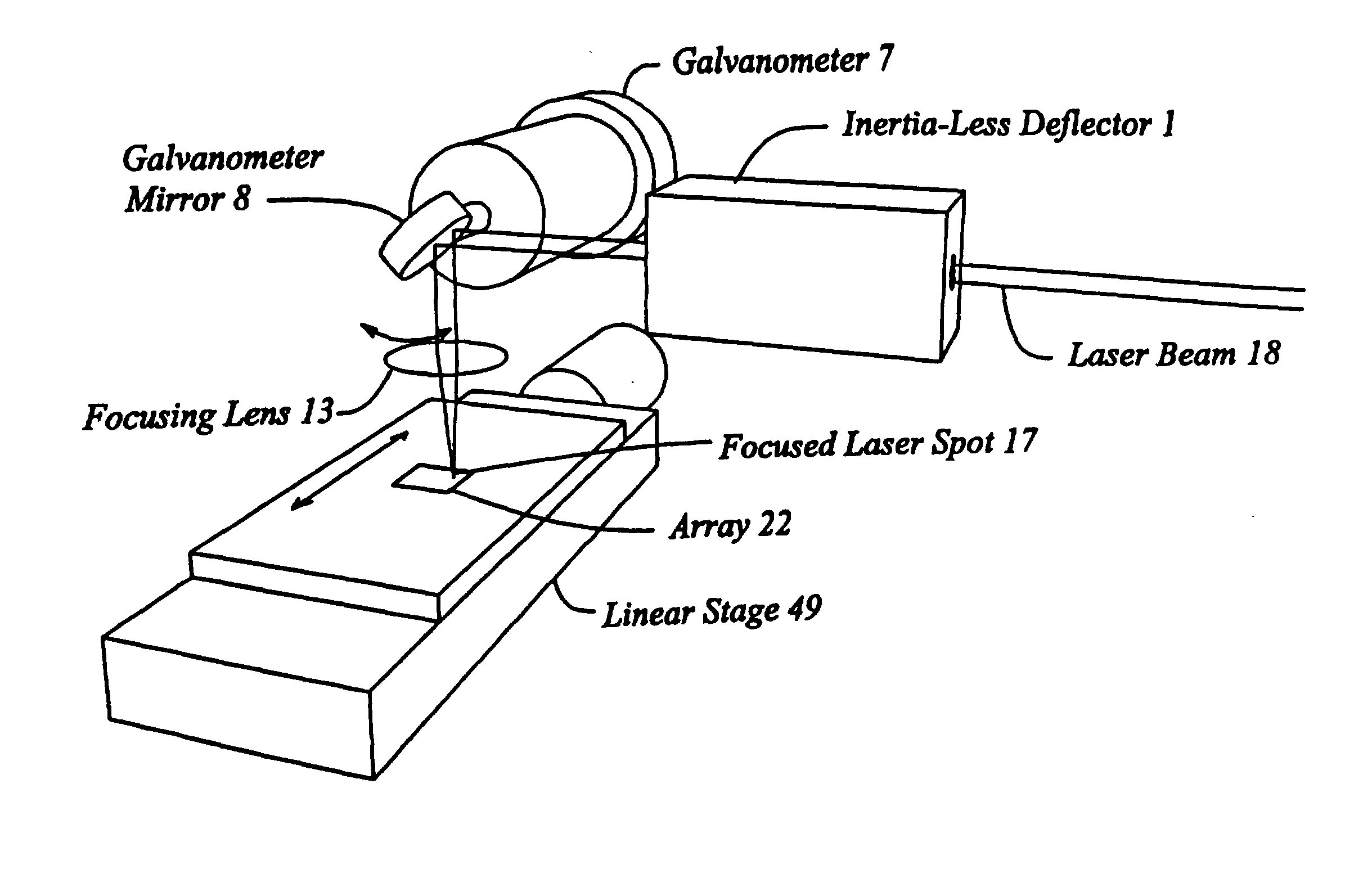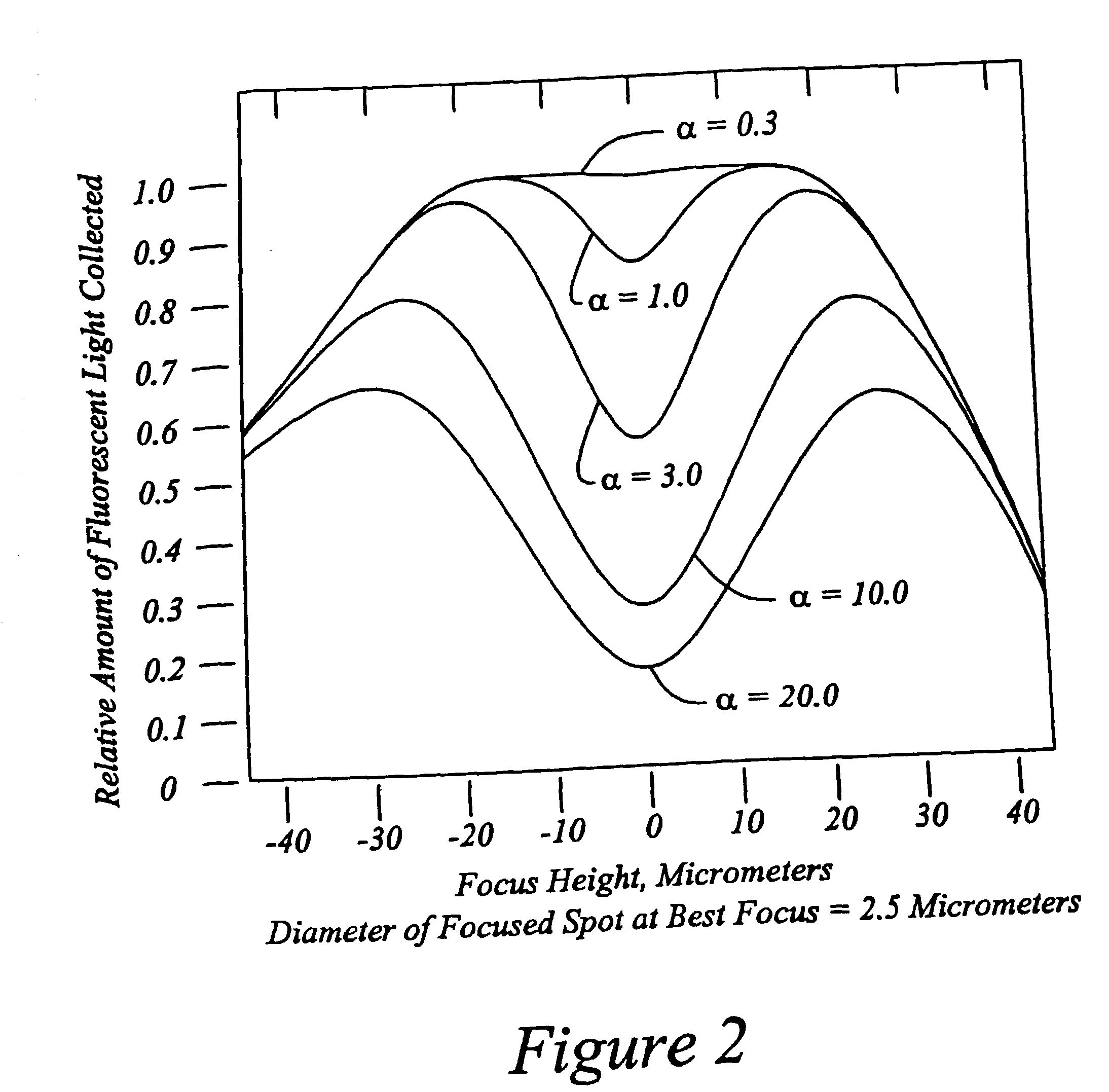Scanning microscopy, fluorescence detection, and laser beam positioning
a laser beam positioning and scanning microscopy technology, applied in the field of scanning microscopy, fluorescence detection, laser beam positioning, can solve the problems of increasing the waste of laser photons, and limiting the beam intensity
- Summary
- Abstract
- Description
- Claims
- Application Information
AI Technical Summary
Benefits of technology
Problems solved by technology
Method used
Image
Examples
Embodiment Construction
[0133] In biological applications in which an array element is deposited as a droplet of liquid, the locations of the individual array elements are not precisely controllable. Therefore it becomes desirable to measure the location of each array element. Measuring such locations has been a byproduct of previous commercial methods of scanning biological arrays, because those methods produce a high resolution picture of the entire array. This high resolution picture has come at a high cost in throughput, and has involved the use of a small focused laser spot, which in turn stimulates the problem of fluorophore saturation that has been overcome by the present invention. According to another aspect of the present invention, provision is included for a preliminary scan of the array, performed rapidly, for the purpose of locating the array elements, spending a small fraction of the time, in an example approximately 20 microseconds per array element, 20 microseconds being typically 10% of t...
PUM
 Login to View More
Login to View More Abstract
Description
Claims
Application Information
 Login to View More
Login to View More - R&D
- Intellectual Property
- Life Sciences
- Materials
- Tech Scout
- Unparalleled Data Quality
- Higher Quality Content
- 60% Fewer Hallucinations
Browse by: Latest US Patents, China's latest patents, Technical Efficacy Thesaurus, Application Domain, Technology Topic, Popular Technical Reports.
© 2025 PatSnap. All rights reserved.Legal|Privacy policy|Modern Slavery Act Transparency Statement|Sitemap|About US| Contact US: help@patsnap.com



